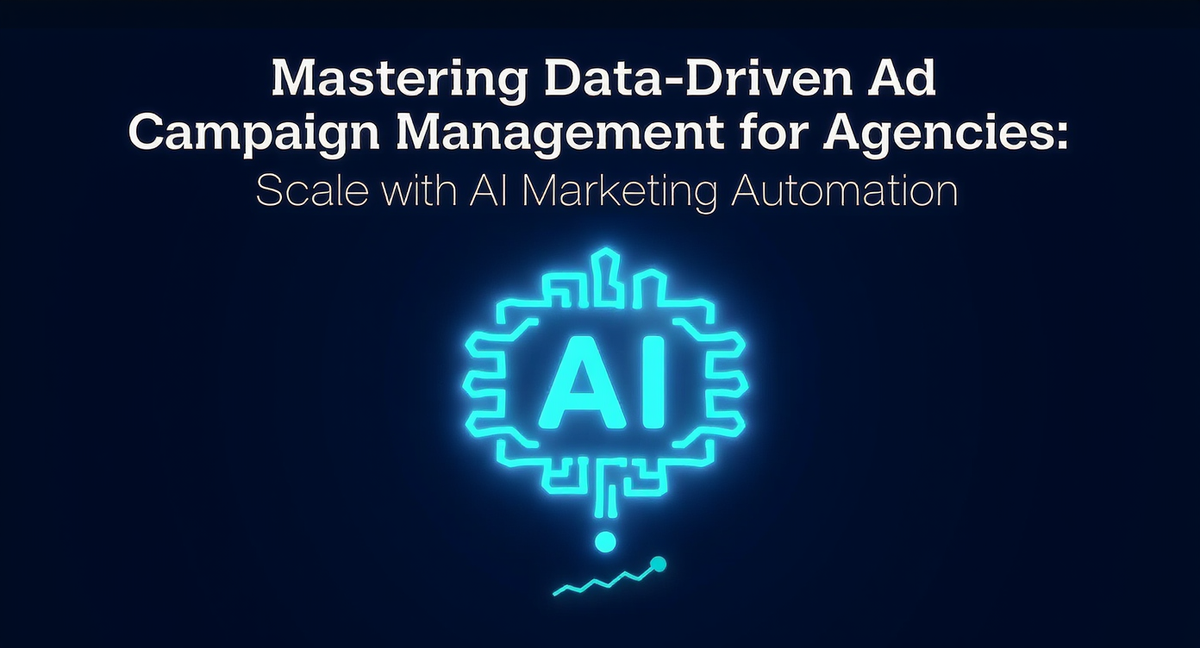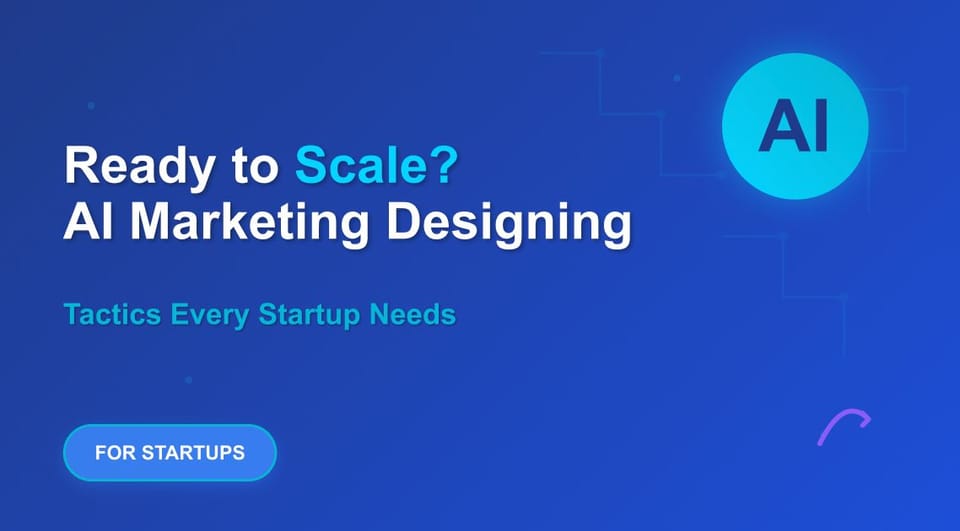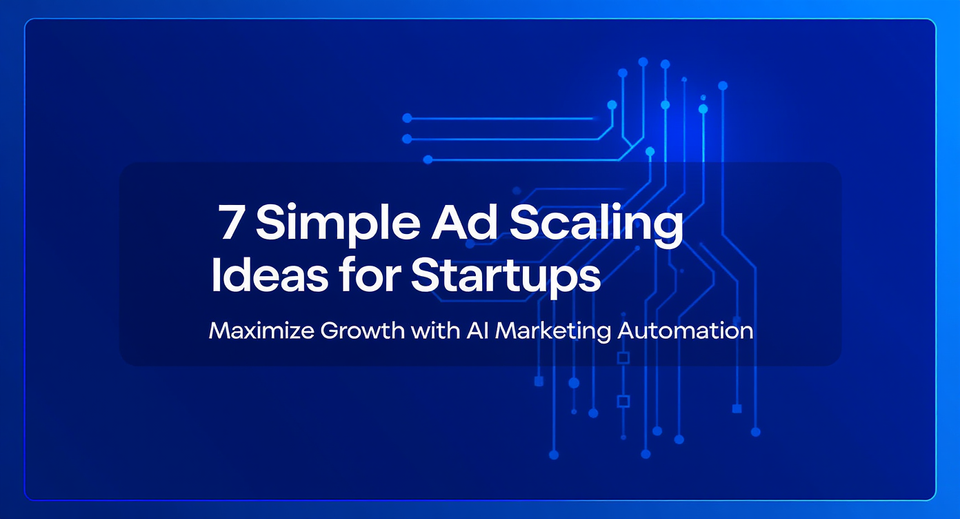Mastering Data-Driven Ad Campaign Management for Agencies: Scale with Precision

In today's digital marketing world, relying on gut feelings is no longer enough. Agencies managing many client campaigns face increasing pressure to deliver measurable results while efficiently expanding operations. The solution? Data-driven ad campaign management - a structured method that transforms raw information into actionable insights for improved performance.
Why Data-Driven Ad Campaign Management Matters
The numbers say it all. According to research by McKinsey & Company, data-driven marketing campaigns produce 5-8 times the ROI for every dollar spent compared to non-data-driven campaigns. Even more compelling, data-driven organizations are 23 times more likely to gain customers than those less analytical.
For agencies handling multiple client accounts, these stats present a huge opportunity. By using data-driven strategies across your client portfolio, you can bring better results while streamlining operations.
The Agency Challenge: Scaling Personalization
Agencies face specific difficulties when dealing with numerous client campaigns:
- Resource Constraints: Limited time and staff to manage numerous accounts
- Diverse Client Needs: Each client requires tailored strategies and messaging
- Platform Complexity: Handling campaigns across multiple ad platforms
- Creative Scaling: Generating personalized creative assets at scale
- Performance Reporting: Monitoring and communicating results effectively
Essential Components of Data-Driven Ad Campaign Management
Successful data-driven campaign management for agencies depends on five key pillars:
1. Unified Data Collection
The foundation of any data-driven approach is thorough data collection. This entails integrating:
- Campaign performance metrics across platforms
- Client CRM and conversion data
- Competitive intelligence
- Creative performance analytics
- Audience behavior insights
According to a Gartner survey, 54% of marketing decisions are influenced by marketing analytics. For agencies, this percentage should be even higher, as data provides the objectivity needed to handle various client needs.
2. Automated Analysis and Insights
Raw data alone isn't sufficient. Agencies need systems that automatically:
- Identify performance trends across client accounts
- Flag underperforming campaigns or ad sets
- Highlight creative elements driving conversions
- Recognize audience segment opportunities
- Produce actionable recommendations
3. Creative Optimization at Scale
According to Forrester research, 78% of organizations say data-driven marketing boosts lead conversion and customer acquisition. A significant factor in this success is the ability to optimize creative assets based on performance data.
For agencies, this means:
- Testing multiple creative variations systematically
- Identifying winning creative elements across client accounts
- Expanding production of high-performing creative concepts
- Personalizing messaging for different audience segments
4. Cross-Platform Campaign Management
Modern agencies must navigate multiple ad platforms for each client. Data-driven management requires:
- Centralized campaign planning and execution
- Consistent tracking and attribution models
- Budget allocation based on performance data
- Cross-platform audience insights
5. Automated Reporting and Client Communication
Companies using data-driven marketing strategies are 6 times more likely to be profitable year-over-year. Communicating this value to clients requires:
- Automated performance dashboards
- Insight-driven client recommendations
- ROI-focused reporting
- Predictive performance modeling

Implementing Data-Driven Ad Campaign Management
For agencies managing multiple clients, implementation follows a strategic progression:
1. Establish Your Data Foundation
Begin by auditing your current data collection processes:
- Are you tracking consistent metrics across all clients?
- Do you have proper attribution models in place?
- Can you access creative performance data?
- Are audience insights being gathered systematically?
Implement a centralized data warehouse that integrates information from all client campaigns, platforms, and touchpoints.
2. Develop Scalable Workflows
Create standardized processes that can be replicated across client accounts:
- Campaign setup templates
- Creative testing frameworks
- Audience building methodologies
- Reporting structures
These workflows should be documented and accessible to all team members, ensuring consistency even as your agency scales.
3. Leverage Creative Automation
Modern ad platforms like Meta and LinkedIn now rely heavily on machine learning to serve ads based on creative relevance rather than granular audience targeting. This shift demands a new approach to creative production.
SurgeGrowth's AI creative production platform enables agencies to launch thousands of personalized, high-performing ad creatives efficiently and on-brand. By automating creative workflows while maintaining quality, agencies can scale personalized campaigns across client accounts without overburdening their teams.
4. Implement Continuous Optimization
Data-driven campaign management isn't a one-time setup but an ongoing process:
- Daily performance monitoring
- Weekly optimization cycles
- Monthly strategy reviews
- Quarterly trend analysis
This cadence ensures campaigns remain optimized while providing strategic insights for long-term planning.
5. Build Client-Facing Dashboards
Transform data into client-friendly visualizations that demonstrate value and drive strategic conversations:
- Real-time performance metrics
- Competitive benchmarking
- Creative performance analysis
- ROI calculations
Tools for Data-Driven Agency Success
The right technology stack is crucial for scaling data-driven campaign management:
- Analytics Platforms: Google Analytics 4, Adobe Analytics, Mixpanel
- Ad Management Tools: Facebook Business Manager, Google Ads Editor, LinkedIn Campaign Manager
- Creative Production: SurgeGrowth for AI-powered creative scaling
- Reporting Solutions: Databox, Supermetrics, Google Data Studio
- Client Management: Monday.com, Asana, ClickUp
Scaling Creative Production with SurgeGrowth
One of the biggest bottlenecks for agencies managing multiple client campaigns is creative production. Traditional approaches—single ad variants, manually built audiences, limited personalization—are both ineffective and operationally unsustainable.
SurgeGrowth solves this challenge by enabling agencies to:
- Scale Personalized Creatives: Launch thousands of personalized ad creatives tailored to location, audience type, intent, or behavior.
- Maintain Brand Consistency: Automate production while ensuring design and brand guidelines are followed across all creative variants.
- Optimize for Algorithms: Create ads designed with platform best practices in mind, helping algorithms learn faster and optimize better.
Measuring Success: Key Metrics for Data-Driven Agencies
To demonstrate the value of data-driven campaign management, focus on these metrics:
- Efficiency Metrics:
- Time saved per campaign
- Creative production velocity
- Optimization frequency
- Performance Metrics:
- Cost per acquisition
- Return on ad spend
- Conversion rate improvements
- Client retention rate
- Scaling Metrics:
- Number of clients per account manager
- Creative variants per campaign
- Tests conducted per month
The Future of Data-Driven Ad Campaign Management
As we look ahead, several trends will shape data-driven campaign management for agencies:
- AI-Powered Creative Optimization: Algorithms will increasingly analyze and generate creative variations based on performance data.
- Predictive Campaign Planning: Advanced analytics will enable agencies to forecast campaign performance with greater accuracy.
- Cross-Platform Audience Insights: Deeper understanding of audience behavior across channels will inform more integrated strategies.
- Privacy-First Data Collection: As third-party cookies disappear, first-party data strategies will become essential.
Conclusion: The Agency Advantage
For agencies managing multiple client campaigns, data-driven ad campaign management isn't just a competitive advantage—it's becoming a necessity. By implementing the strategies and tools outlined in this guide, you can deliver superior results for clients while scaling your operations efficiently.
Remember that the goal isn't just to collect more data, but to transform that data into actionable insights that drive performance. With the right approach, your agency can harness the power of data to create more personalized, effective campaigns at scale.
Ready to transform your agency's approach to campaign management? Start by auditing your current data practices, identifying gaps, and implementing the strategies outlined above. The future of agency success lies in data-driven decision making.
Citations
- McKinsey & Company. "The value of getting personalization right—or wrong—is multiplying."
https://www.mckinsey.com/capabilities/growth-marketing-and-sales/our-insights/the-value-of-getting-personalization-right-or-wrong-is-multiplying - Gartner. "Marketing Data and Analytics Survey 2020." https://www.gartner.com/en/marketing/research/marketing-data-and-analytics-survey-2020
- McKinsey Global Institute. "The Age of Analytics: Competing in a Data-Driven World."
https://www.mckinsey.com/capabilities/mckinsey-digital/our-insights/the-age-of-analytics-competing-in-a-data-driven-world - Forrester. "Data And Analytics Survey 2023." https://www.forrester.com/report/data-and-analytics-survey-2023/RES177359
FAQs
Q: How much ROI improvement can agencies expect from data-driven ad campaign management?
A: According to research, data-driven marketing campaigns generate 5-8 times the ROI compared to non-data-driven approaches. However, results vary based on implementation quality and industry.
Q: What's the biggest challenge for agencies implementing data-driven campaign management?
A: The biggest challenge is typically scaling personalized creative production across multiple clients while maintaining brand consistency and quality.
Q: How can small agencies compete with larger ones using data-driven approaches?
A: Small agencies can leverage automation tools like SurgeGrowth to scale creative production and campaign management, allowing them to compete effectively with larger agencies despite having fewer resources.
Q: How often should agencies analyze campaign data for optimization? A: Implement a tiered approach: daily monitoring for critical metrics, weekly optimization cycles for tactical adjustments, and monthly strategic reviews for broader campaign direction.
Q: What's the first step in transitioning to data-driven campaign management?
A: Start by auditing your current data collection processes and establishing a centralized data warehouse that integrates information from all client campaigns and platforms.




